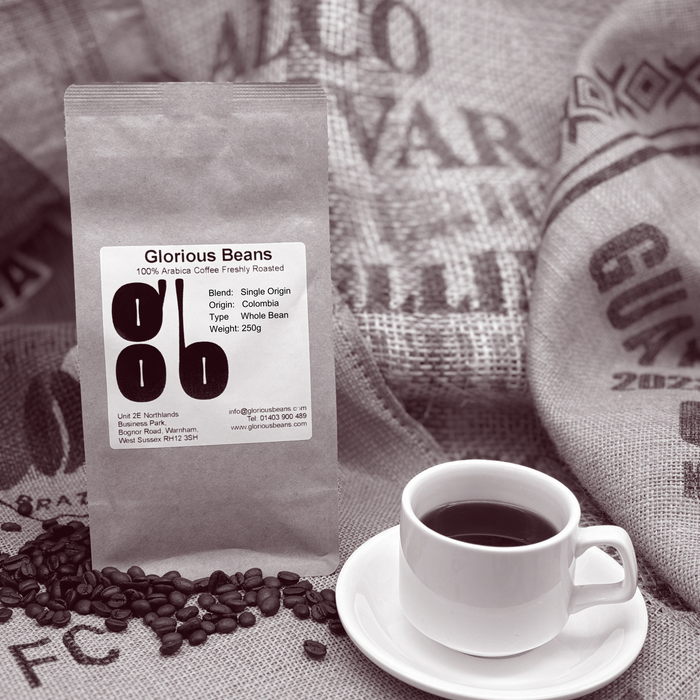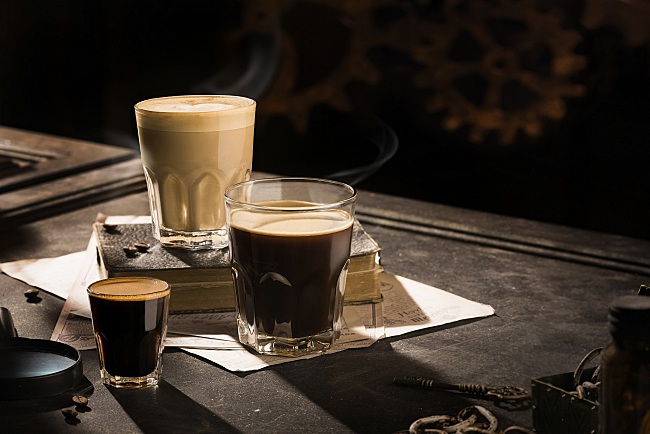A First-Time User’s Guide to Understanding SOE Single Origin Espresso
A First-Time User’s Guide to Understanding SOE Single Origin Espresso
Blog Article
Comprehending Coffee Beans: the Journey From Coffee to Blended Coffee Beans

The Origins of Coffee: A Worldwide Point Of View
While you might think of coffee as a modern-day staple, its origins map back centuries, intertwining with cultures throughout the globe. The tale starts in Ethiopia, where tale claims a goat herdsman named Kaldi uncovered the energizing impacts of coffee beans after seeing his goats frolicking energetically after consuming them.
As profession routes broadened, coffee made its means to Europe in the 17th century, promptly obtaining appeal. Each society added its special spin to coffee prep work, enriching its history.
Growing and Harvesting of Coffee Beans
As coffee's trip advanced, the emphasis shifted to the farming and harvesting of details bean varieties, especially those used for espresso. You'll locate that coffee beans typically come from Arabica or Robusta plants, each offering unique tastes. The optimal growing problems include high altitudes and rich, well-drained dirt, which enhance the beans' quality.
During the harvest, selecting techniques differ. In some regions, workers hand-pick ripe cherries, guaranteeing only the very best fruit mosts likely to handling. In other locations, mechanical harvesters are used, particularly on larger farms. Timing is vital; you intend to harvest when the cherries get to peak ripeness for optimum taste.
As soon as gathered, the beans are gotten ready for handling, which is essential in establishing their final taste. Comprehending the farming and gathering processes gives you insight into what enters into your favorite espresso, enriching your gratitude for each and every cup.
Processing Methods: From Cherry to Bean
Now that you've found out about gathering espresso beans, let's check out just how those cherries transform into the coffee beans you like. You'll see just how different harvesting techniques influence flavor, complied with by the important actions of fermentation and drying out. We'll break down the milling and grading process that determines your coffee's high quality.
Harvesting Methods Clarified
When it concerns coffee, comprehending harvesting strategies is essential, given that they straight impact the taste and high quality of the beans you take pleasure in. There are two key approaches: careful selecting and strip picking. Discerning selecting entails hand-picking only ripe cherries, ensuring you get the best top quality beans. This approach commonly brings about a richer taste account, though it's more labor-intensive. On the various other hand, strip selecting ways gathering all cherries at the same time, no matter perfection. While it's quicker and cheaper, this can lead to a mix of flavors, affecting the last item. Eventually, the option of collecting technique can significantly affect your coffee experience, so it's worth recognizing how those beans made it to your cup.
Fermentation and Drying
After harvesting, the next steps in processing coffee beans play a considerable function in shaping their flavor. You'll discover that fermentation is essential, as it aids break down the mucilage bordering the beans, boosting their preference account. Relying on the approach, this process can last from a couple of hours to several days, with differing outcomes based upon temperature level and moisture.
Once fermentation is total, drying out complies with, which is similarly crucial. You can select from sun-drying or mechanical drying methods. Sun-drying permits the beans to absorb tastes from the environment, while mechanical drying assurances consistent dampness degrees no matter of climate. Correct drying out is necessary to protect against mold and mildew and maintain the beans' high quality, eventually affecting your cup of coffee.
Milling and Grading Refine
As fermentation and drying set the stage for flavor growth, the milling and grading procedure warranties that just the most effective coffee beans make it to your cup. This phase includes getting rid of the external layers of the coffee cherry, including the parchment and husk. After milling, the beans are sorted by size and weight, making sure an uniform high quality. You'll find that grading assists identify flaws and categorize beans, which impacts taste and aroma. Top notch beans get a greater quality, leading to a richer coffee experience. As soon as graded, the beans are all set for packaging and shipping, protecting their special qualities. This meticulous process is essential for supplying the remarkable taste you appreciate in every sip of your preferred mixture.
Toasting Methods: Opening Flavor Potential
When you roast coffee beans, the method you choose can significantly influence the flavor profile. Recognizing the connection between time, temperature, and toasting methods is vital to Source exposing the possibility of your brew. Allow's check out how these aspects integrated to create the best mug.
Roasting Methods Described
While you may believe that all coffee roasting techniques produce the exact same results, the truth is that each technique exposes special flavor possibilities in the beans. Drum roasting uses a revolving drum to uniformly distribute heat, improving caramelization and creating a well balanced flavor. Air roasting, on the various other hand, distributes hot air around the beans, advertising a lighter roast with noticable level of acidity.

Influence On Flavor Profile
Various toasting methods not just affect the procedure however likewise greatly impact the taste profile of the coffee beans. Dark roasts, on the other hand, bring out strong, smoky tastes, in some cases concealing the bean's unique qualities. Comprehending these subtleties aids you value the artistry behind your cup of coffee, improving your general experience with every sip.
Time and Temperature Factors
To release the full taste capacity of coffee beans, both time and temperature level throughout the toasting procedure play substantial functions. When roasting, you'll discover that higher temperatures can rapidly develop flavors, but if you hurry it, you may end up with burnt notes. On the other hand, lower temperatures enable a much more progressive taste advancement, showcasing the beans' unique attributes.

Timing is equally as vital; extending the roast too long can bring about a loss of level of acidity and illumination, while also brief a roast might leave the beans underdeveloped. Finding that sweet spot requires technique and experimentation. By readjusting these factors, you can expose the abundant, complicated tastes concealed within each bean, creating a genuinely impressive coffee experience.
The Art of Mixing: Crafting Special Coffee Profiles

Start by selecting a base coffee that gives a solid structure. An intense Ethiopian bean can bring fruitiness, while a rich Brazilian coffee adds body.
As you blend, remember that each combination informs a tale. You're not simply making coffee; you're creating an experience. Take your time, taste frequently, and appreciate the trip of finding your signature blend - Single Origin Espresso.
Brewing Techniques: Exactly How Preparation Affects Flavor
Blending coffee opens up a domain name of taste opportunities, however how you make that mix can considerably influence your last mug. On the various other hand, a pour-over highlights the coffee's clarity and brightness, excellent for showcasing fragile notes.
Espresso, with its high stress, produces a focused shot that highlights sweet taste and crema. If you prefer a lighter mixture, internet consider a chilly mixture approach; it produces a smooth, less acidic taste.
Adjusting variables like water temperature level, grind size, and make time can transform your coffee's profile. Accept the art of developing to uncover the tastes concealed in your coffee blends.
The Future of Coffee: Sustainability and Innovation
As the coffee market advances, sustainability and technology are coming to be vital for addressing ecological difficulties and meeting customer needs. You'll observe that even more coffee companies are taking on green practices, from sourcing beans morally to applying sustainable farming methods. These shifts not only aid the planet yet likewise enhance the top quality of the coffee you enjoy.
You might see advancements like eco-friendly packaging and water-saving developing techniques that decrease waste. Advanced technology, such as blockchain, is also becoming popular, ensuring transparency in the supply chain, which enables you to trace your coffee back to its beginnings.
Additionally, buying local areas and supporting farmers through fair profession initiatives cultivates a more lasting coffee environment. As you drink your next mug, remember that your selections can contribute to a brighter future for coffee. By choosing lasting brands, you're not just taking pleasure in a beverage; you're making a positive influence on the world.
Regularly Asked Concerns
What Is the Distinction In Between Arabica and Robusta Beans?
Arabica beans are smoother, sweeter, and have a greater acidity, while robusta beans are more powerful, more bitter, and have more high levels of caffeine. You'll discover these distinctions in flavor and fragrance when brewing your coffee.
Just How Does Altitude Affect Coffee Bean Taste?
Altitude influences coffee bean flavor significantly. Higher elevations create beans with brighter level of acidity and facility tastes, while reduced altitudes typically yield beans that are much heavier and less nuanced. You'll discover these differences in your mug!
What Are the Health Conveniences of Alcohol Consumption Coffee?
Consuming alcohol coffee can boost your energy, enhance mental focus, and also enhance physical performance. It's abundant in antioxidants, may lower the danger of particular conditions, and can promote a healthier metabolic rate when consumed in moderation.
Can Coffee Beans Be Recycled for Developing?
Yes, you can the original source reuse coffee beans for developing, but the taste could be weaker. If you delight in exploring, try recycling them in various methods, like chilly mixtures or including in healthy smoothies for an added kick.
How Should I Shop Coffee Beans for Freshness?
To keep your coffee beans fresh, save them in an impermeable container in an amazing, dark location. Stay clear of subjecting them to wetness, warmth, or light, as these variables can quickly deteriorate their flavor and scent.
Recognizing Coffee Beans: the Trip From Coffee to Blended Coffee Beans.
Now that you've found out about harvesting coffee beans, allow's discover how those cherries transform into the coffee beans you love.When you roast coffee beans, the technique you select can dramatically affect the flavor profile - Single Origin Espresso.While you may think that all coffee roasting methods generate the exact same results, the fact is that each technique discloses one-of-a-kind flavor potentials in the beans.Various roasting techniques not just affect the process however also considerably influence the flavor profile of the coffee beans
Report this page